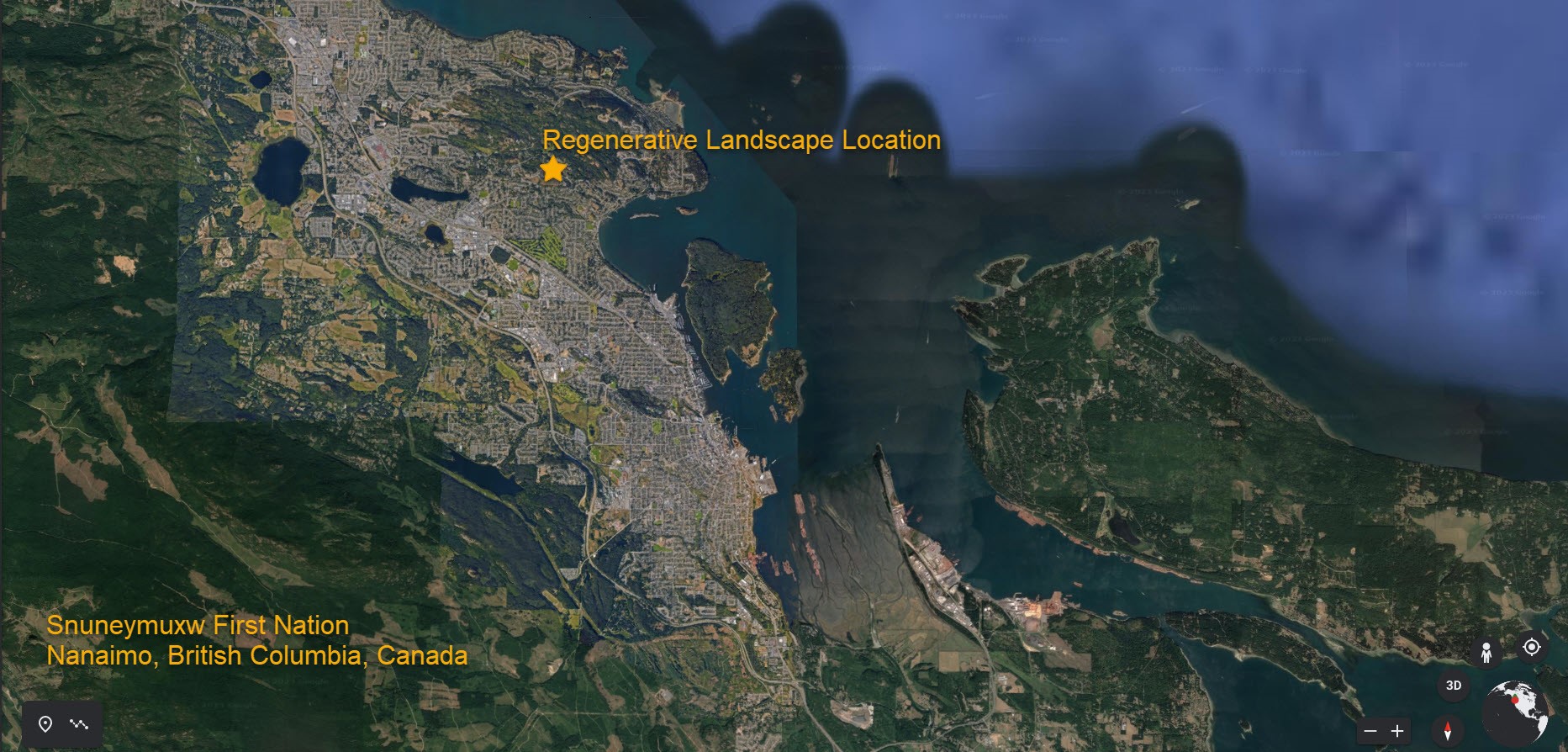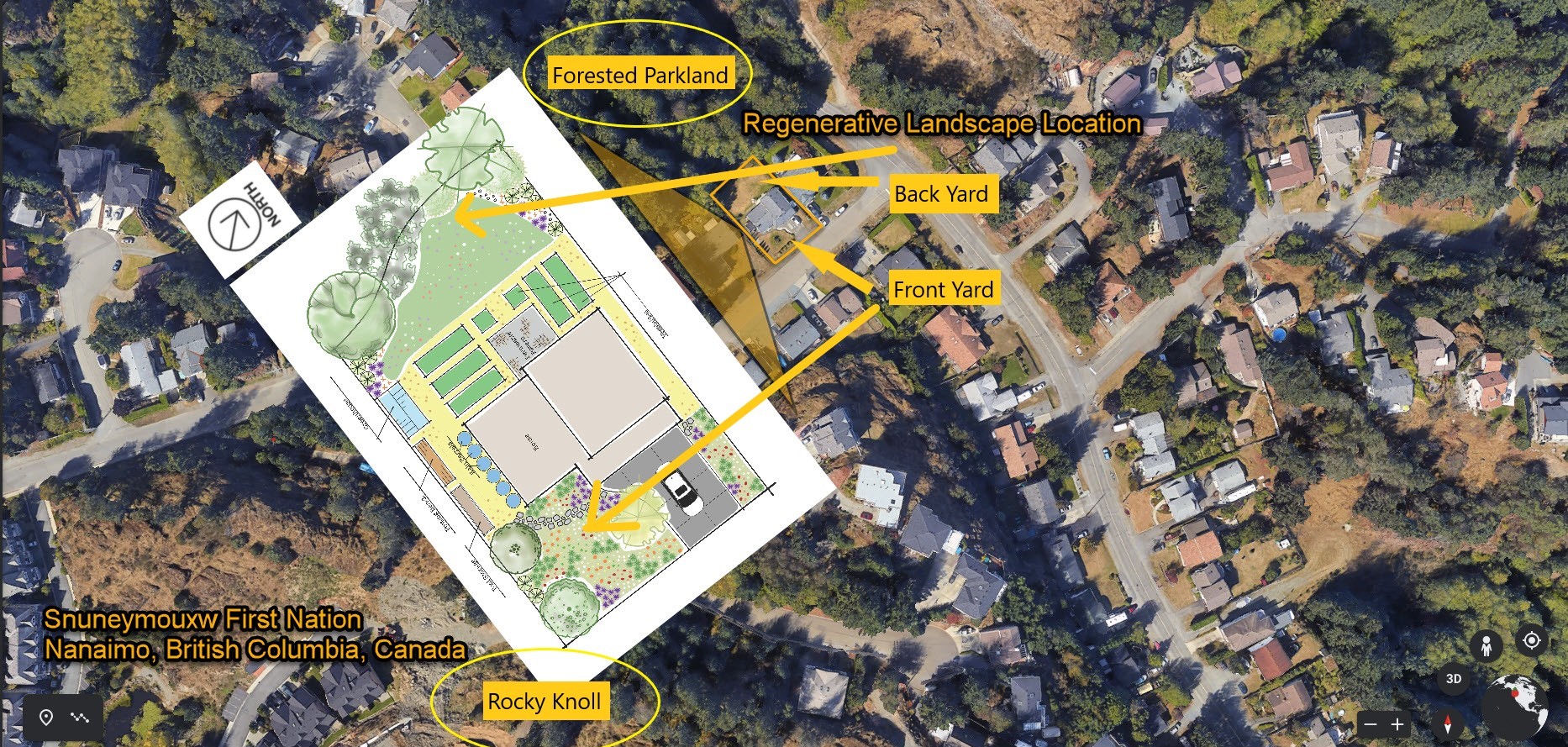Regenerative Landscape: Planning with Purpose
Regerate (to renew/restore/respect)
Keywords: greenhouse gas effect, carbon footprint, carbon sequestration, regenerative landscape, food security, wildlife habitat, biodiversity, natural resources, social impact, reflection
Let’s start by circling back to the greenhouse effect. The greenhouse effect is a natural phenomenon that occurs when certain gases in the Earth’s atmosphere, known as greenhouse gases, trap and absorb heat from the sun that is radiated back into space. This process helps regulate the earth’s temperature, making it habitable for life.
Greenhouse gases, such as carbon dioxide, methane, and water vapour, act like a blanket around the Earth, trapping the sun’s energy and preventing it from escaping into space. This causes the Earth’s atmosphere to warm, which in turn warms the planet’s surface and oceans. While the greenhouse effect is a natural process, human activities such as burning fossil fuels and deforestation have increased the number of greenhouse gases in the atmosphere, leading to an enhanced greenhouse effect and global warming. This has serious implications for the earth’s climate, including rising sea levels, more frequent and intense heat waves, droughts, and extreme weather events.
So, we know that the biggest cause of climate change is humans, and it’s also our responsibility within the landscape horticulture industry to green our mindset and select alternative practices to adapt to and mitigate the consequences of climate change.

We invite you to recall the overview sections on Indigenous Knowledge, perspectives, and learning, in particular the First People’s Principles of Learning, and Two-eyed Seeing.
We encourage you to identify ways that the regenerative landscape aims to connect the elements of the First People’s Principles of Learning and Two-Eyed Seeing into the planning phase of the regenerative landscape.
The Regenerative Landscape: Introduction
Regenerate: (to renew/restore/respect)
Embedded in the essence of the horticulture industry, commonly referred to as landscaping, is the word ‘land’. Land is an important place for us to start our conversation, as it’s central to the cultural and historical past of the once Nations and current Canada.
In other words, by looking back and acknowledging the Truth of what happened on the lands and to the Aboriginal Peoples who stewarded these lands for thousands of years, we can begin to look towards ways to appropriately acknowledge Indigenous Knowledge, perspectives, and learning and contribute toward Reconciliation efforts relevant to post-secondary education and the horticulture industry.
Land Governance: Past
Video Credit: David Suzuki Foundation, 2024
Land Governance: Present
Video Credit: David Suzuki Foundation, 2024
Land Governance: Future
Video Credit: David Suzuki Foundation, 2024
https://fpcc.ca/stories/first-peoples-map/
Credit: (First Peoples’ Cultural Council, 2024)
The Regenerative Landscape: A Wider Look
To begin the story of the regenerative landscape, we would like to acknowledge that the design and development of the regenerative landscape took place on the traditional and unceded lands of the Snuneymuxw First Nation where the residents of this landscape gratefully live and work as uninvited guests and intend to walk softly.
Before we get into the details of the regenerative landscape base plan, we invite you to look at the positionality of the regenerative landscape in relation to the wider ecosystem and community. Below are images to help orient you to the location of the regenerative landscape.
By first using a wider lens to recognize the regenerative landscape, the aim is to become aware of the environmental and community systems that the regenerative landscape connects to, contributes to, and disrupts.
The Regenerative Landscape: A closer look
Now that we know how the regenerative landscape is situated within the broader ecosystem and community, let’s take a closer look at the regenerative landscape base plan.
As we consider the planning phase, it’s important to acknowledge the surrounding area. To the southwest, there is a rocky knoll that collects and directs water toward the forested parkland to the north of the landscape. This forested parkland serves as a habitat corridor, connecting the plant and animal species in the suburban areas to a larger urban park located to the northwest of the landscape.
These observations emphasize the significance of the regenerative landscape’s location and the impact that the construction and maintenance phases will have on the waterways, plants, animals, and nearby residents.
The Regenerative Landscape: Design
Regenerative landscaping is a holistic approach that promotes environmental, social, and economic sustainability (review the United Nations SDGs here). The regenerative landscape refers to a system of landscape design, construction, and maintenance that aims to renew, restore, respect, and improve the health of ecosystems as a whole (review Two-eyed Seeing here).
The regenerative landscape approach involves using natural systems and processes to enhance soil health, promote biodiversity, increase carbon sequestration, and create greener, sustainable, resilient landscapes for people, animals, and plants.
A major element of the regenerative landscape is to highlight the reciprocal, interdependent, and cyclical relationship between landscape horticulturalists, the surrounding environment, and the wider ecosystem. For example, the surrounding environment is a place where landscape horticulturalists have a canvas to construct their work, and in turn, landscape horticulturalists must give back to the ecosystem through their work.
The regenerative landscape is introduced and used in this faculty training module as an example of how horticulturalists in landscape construction and maintenance can adapt their practices and reduce waste and greenhouse gas emissions, which are the main contributors to global warming, while respectfully interacting with the living environments and traditional lands on which they work.
In each chapter of the module, a section of the regenerative landscape is figuratively built to illustrate ways to reduce the carbon footprint through the reflective and thoughtful selection of greener and sustainable landscape construction and maintenance practices. *A carbon footprint is the total amount of greenhouse gases (including carbon dioxide and methane) that are generated by our actions.
The goal of the regenerative landscape is to promote reflection, create self-sustaining landscapes, and provide a range of ecosystem services, such as clean air and water, pollination, resource rejuvenation, and wildlife habitat. In addition to environmental benefits, regenerative landscapes can also provide economic and social benefits, such as improved food security, reduced energy use, and enhanced community resilience.
 The Regenerative Landscape Plan.
The Regenerative Landscape Plan.
Key Features of the Regenerative Landscape Plan
| Plan Area | Regenerative Feature |
Regenerative Benefit
|
| Front Garden | Significant plant material: trees, meadow planting, drought-tolerant plants, native plants, edible or medicinal plants | Promote biodiversity and wildlife habitat, increase carbon sequestration, improve air quality, reduce erosion, water conservation, ecosystem resiliency
|
| Back Garden | Reduced lawn, increased plant material, native plant border, vegetable beds, permeable pavers. | Enhance soil health, increase food security, enhance community resistance, resource rejuvenation, and clean air and water. Small lawn area for the (adorable) family dog, a health and wellness feature for the residents.
|
|
General
|
Rain barrels, greenhouse, battery-powered maintenance equipment /solar energy | Reduce carbon emissions, food security, water collection and rejuvenation into waterways, and hydrological management with increased plant material to filter and slow the return of stormwater drainage into the waterways |
Reflect

Please use the following questions to guide your reflection:
- How can regenerative landscaping be used to achieve the environmental, economic, and social goals of greener and more sustainable development?
- What is the relationship between regenerative landscaping and the UN Sustainable Development Goals (SDGs), and how can individuals contribute to this approach in the planning and designing phases of a landscape project?
- Consider your past, the past of the land, and the traditional peoples who stewarded the land for thousands of years before. What comes to mind through reflection on these factors?
- What are your thoughts on Landback? In what ways do you perceive land back and its connection to the horticulture industry?
- Imagine or draw your favourite garden that you recalled at the beginning of this chapter. Do your favourite features in your garden align with the goals of the regenerative landscape? If yes, how? If not, explain how they differ.
- In what ways do you feel connected to your projects, and what influence do you feel you have on the environment through your work?
- Think of your upcoming landscape design project. How can the principles of regenerative landscaping be applied to the design and management of your next project, and what are the potential benefits of aligning your garden with these goals?
Additional Resources
We’ve compiled a list of additional resources to support your learning about the topics in this chapter. The additional resources are not required as part of this course; please engage with them as you need them to support your learning.
| Name | Link |
| David Suzuki Foundation: What is Land Back? | https://davidsuzuki.org/what-you-can-do/what-is-land-back/ |
| 4 Rs Youth Movement: LAND BACK! What do we mean? | https://4rsyouth.ca/land-back-what-do-we-mean/ |
| CBC: Here are 3 places to watch the Land Back movement unfold in 2023 | https://www.cbc.ca/radio/unreserved/indigenous-land-back-movement-1.6704611 |





Feedback/Errata